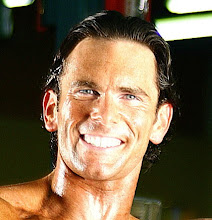
Not all exercises are created equal. Some are far better at stimulating muscular development than others. It is a wise choice to structure your training schedule around the most effective exercises in order to maximize your time and efforts in the gym.
As a rule, free weight compound exercises that involve movement through more than one joint and the recruitment of multiple muscle groups are most effective. Compound exercises require you to balance the weight as it travels through a natural and full range of motion, while effectively achieving maximum overload. These are all very important characteristics to look for in the exercises you choose. That is, of course, if you want to achieve the greatest results.
When you are talking about compound exercises that involve multiple muscle groups and movement through multiple joints, deadlifts is one of the best. Along with squats, it is hard to think of another exercise that has as much total body involvement.
The nature of this exercise makes it extremely effective for stimulating muscular strength and development from head to toe. It also makes it possible to generate a lot of power and handle some pretty serious weights.
As they say, “with great power comes great responsibility.” That is very true when it comes to executing deadlifts. To get the most out of the movement and to protect yourself from injury it is important to fully understand the mechanics of this exercise and develop great execution techniques before building up to massive weights. Remember – better execution will lead to greater results.
When I perform deadlifts I like to envision my body working as one powerful unit to raise the weight off the ground as my body moves from a squat into a standing position. I like to feel the power I can generate each rep by driving through with my legs and keeping my abs and lower back (core) tight as I stand up. This helps remind me to use my whole body to move the weight and not place all the stress on my lower back.
To begin I stand with my feet a little less than shoulder width apart and my shins very close to the bar, approximately 1 or 2 inches away. I squat down and grip the bar with an overhand grip and my hands positioned a little wider than my legs. I like to use wrist wraps to help my grip strength.
To start the movement I keep my head looking up to help maintain a natural arch in my back and my abs and lower back remain tight. I generate the initial part of the move by keeping my butt low and driving through with my legs and hips as I lift the weight off the ground. I keep the bar close to my body, almost as if I was dragging it up my legs until I get to a standing position.
Once I am standing straight I don’t hyper extend my back by leaning backwards, I stop and prepare mentally for the second part of the movement.
I follow the same procedure in reverse for returning the bar to the starting position. I keep my head up and back arched with the bar remaining close to my body. As I lower the weight I squat down using my legs to help me lower the weight. Under complete muscular control I sit the weight back on the ground.
Once the weight is stationary on the ground I make sure my grip is set and my base is sturdy with my feet firmly planted. I remind myself to keep my butt down and my head up. When I am mentally and physically prepared, I do another rep.
I find it helpful to “reset’ myself after every rep rather than trying to do one continual set with no rest. Resetting myself after each rep keeps my form and focus strong and helps me execute the exercise correctly. This is especially important during a full body compound exercise like deadlifts.
Deadlifts have always been a challenging exercise for me and for the longest time I never felt very comfortable with the form and execution. I didn’t even include deadlifts the first several years I started bodybuilding because I didn’t realize the importance of the exercise or its impact on overall development, especially for the back and traps. Once I understood the important role deadlifts could play I made a commitment to learning and executing them better. As my execution improved, my confidence grew and so did my weights. Consequently making deadlifts a bigger part of my training really improved my back development and it was especially noticeable the last couple years of my career.
I definitely think it is worth your while to incorporate deadlifts into some of your Max-OT routines. Take the time to learn and get comfortable with the mechanics of the exercise and then work to increase your weights from there.
I often say "basics are best" and it doesn’t get much more basic than loading a bar up with weights and picking it off the ground.
Believe. Achieve.
www.jeffwillet.com













